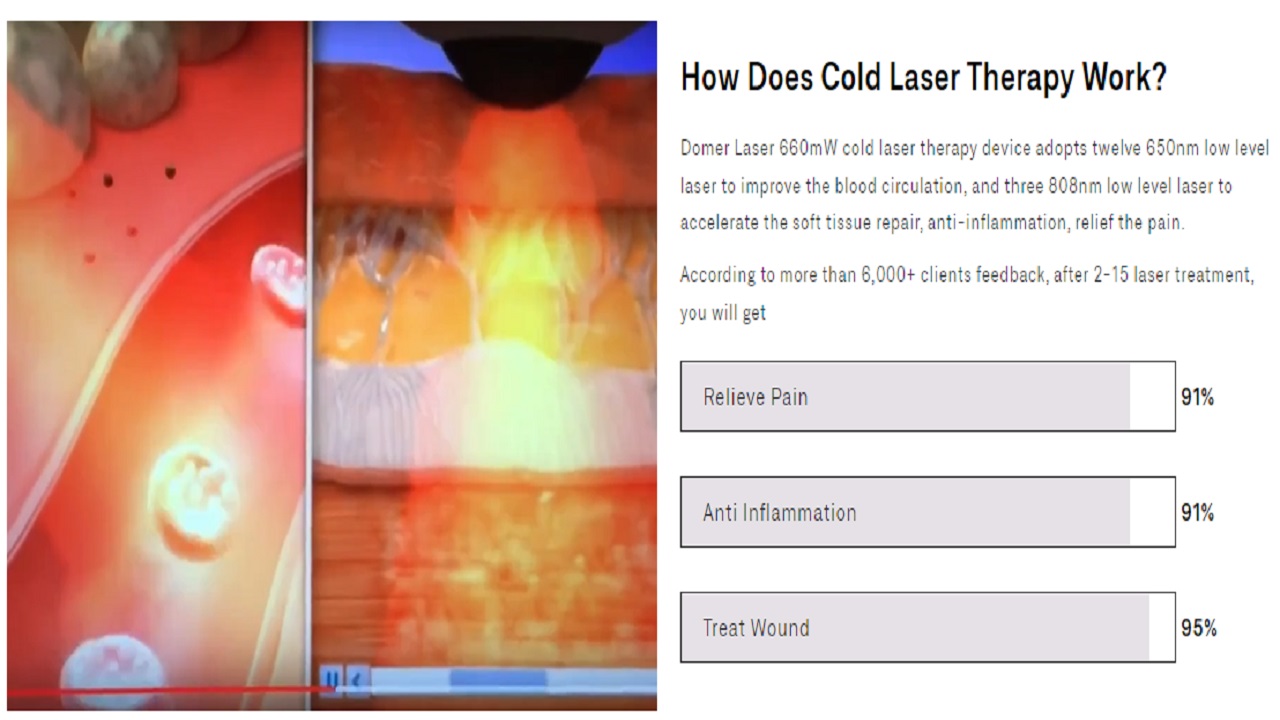To get relief from pain, innovation continually pushes the boundaries of traditional treatments. One such advancement that has garnered significant attention is the Low-Level Laser Therapy (LLLT) machine. This cutting-edge technology offers a non-invasive, drug-free approach to alleviating various forms of pain, revolutionizing the way we address discomfort and enhancing the quality of life for many individuals. Let's delve deeper into how the low level laser therapy device helps people find relief from pain:
Understanding Low-Level Laser Therapy
Low-Level Laser Therapy, also known as cold laser therapy or photobiomodulation, utilizes specific wavelengths of light to stimulate cellular function. Unlike high-power lasers used in surgical procedures, LLLT emits low levels of light that do not generate heat, making it safe and painless for the patient.
Principle Behind Low Level Laser Therapy
The principle behind LLLT lies in its ability to penetrate the skin and interact with cells at the molecular level. When targeted at affected areas, the photons emitted by the laser are absorbed by chromophores within the cells, initiating a series of biochemical reactions. This process enhances cellular metabolism, increases circulation, reduces inflammation, and stimulates tissue repair, thereby alleviating pain and promoting healing.
Applications of LLLT
The versatility of LLLT makes it applicable across various medical disciplines and conditions. Here are some areas where LLLT has shown promising results:
Musculoskeletal Pain Management
LLLT is widely used in the treatment of musculoskeletal conditions such as arthritis, tendonitis, and sports injuries. By reducing inflammation and promoting tissue repair, LLLT can effectively relieve pain, improve range of motion, and accelerate recovery in patients suffering from these ailments.
Neuropathic Pain Relief
Neuropathic pain, stemming from nerve damage or dysfunction, can be debilitating and challenging to manage. LLLT offers a non-invasive option for alleviating neuropathic pain by modulating nerve activity, reducing inflammation along nerve pathways, and promoting nerve regeneration.
Wound Healing
LLLT has demonstrated remarkable efficacy in accelerating wound healing processes. By stimulating cellular proliferation and collagen synthesis, LLLT can expedite the closure of both acute and chronic wounds, including ulcers, burns, and surgical incisions, while minimizing scar formation.
Dental Applications
In dentistry, LLLT has emerged as a valuable tool for various procedures, including treating temporomandibular joint disorders (TMJ), reducing post-operative pain and inflammation following dental surgeries, and promoting tissue regeneration in periodontal therapy.
Advantages of LLLT
The widespread adoption of LLLT can be attributed to its numerous advantages over conventional pain management modalities:
Non-invasive
LLLT offers a non-invasive alternative to surgery or pharmacological interventions, minimizing the risk of complications and side effects.
Drug-Free
Unlike medications, LLLT does not entail the use of pharmaceutical agents, eliminating concerns related to drug interactions, addiction, or adverse effects.
Safe and painless
LLLT is well-tolerated by patients and does not cause discomfort or tissue damage, making it suitable for individuals of all ages.
Targeted therapy
LLLT allows for precise targeting of affected areas, ensuring localized treatment and maximizing therapeutic efficacy.
Quick and convenient
LLLT sessions are typically short and can be performed on an outpatient basis, allowing patients to resume their daily activities without significant disruption.
Conclusion
The Low-Level Laser Therapy machine represents a paradigm shift in pain management, offering a safe, effective, and versatile approach to relieving pain and promoting healing. With its broad range of applications and numerous advantages, LLLT has emerged as a valuable tool for healthcare professionals across various specialties. As research continues to unravel its mechanisms and expand its therapeutic potential, LLLT holds the promise of transforming the landscape of pain relief, providing hope and relief to millions of individuals worldwide.


